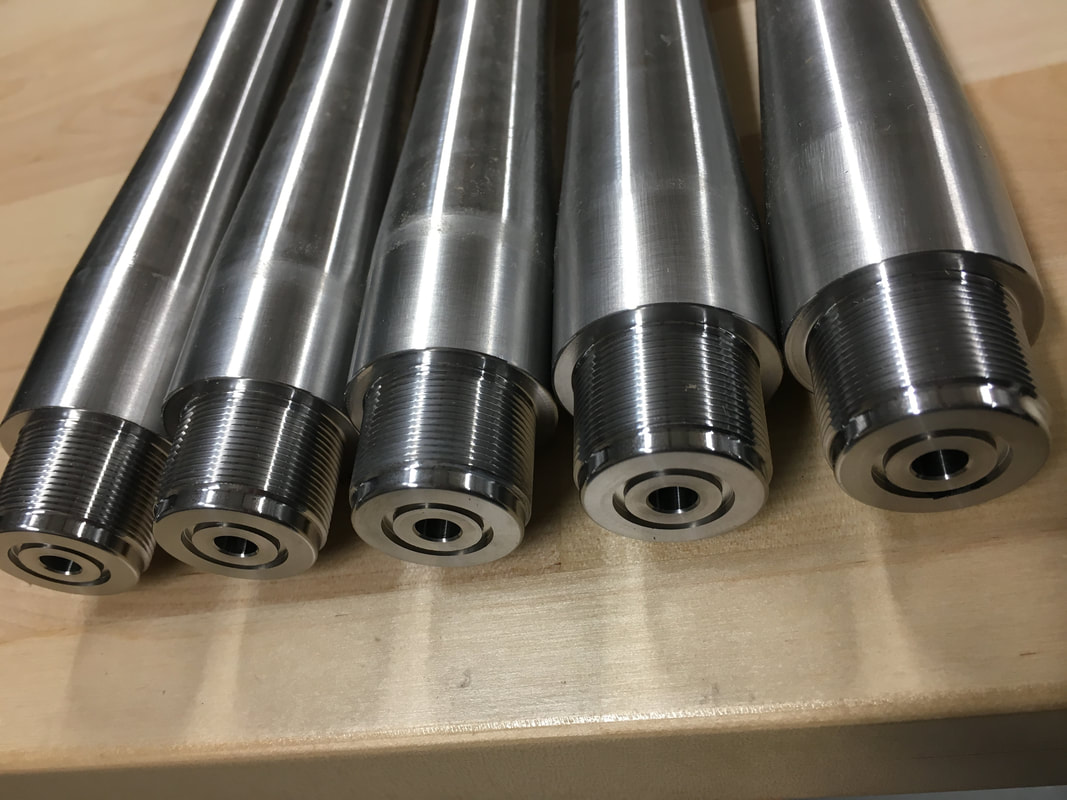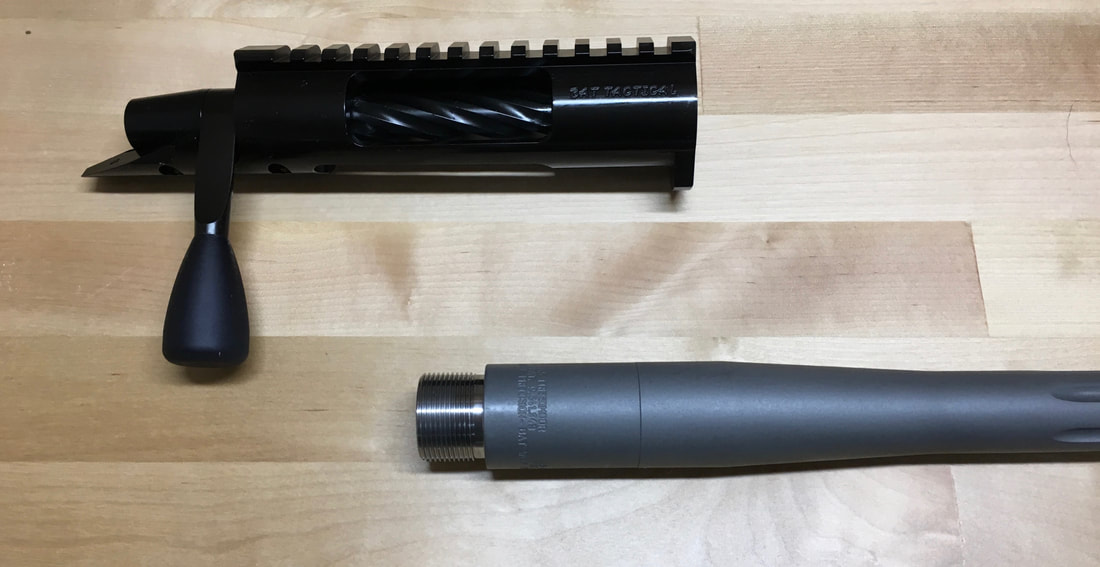|
So, you think you are ready to build your dream rifle? You have read all the articles, picked out the perfect caliber. You stressed over your decision on the best action for your intended uses, (hopefully you choose a Bat Machine action), and now it's time for a barrel. Easy enough, right? You think..."I know I want a 7 twist for my 22 Creed. I know I want it to be a heavy barrel for match shooting, so a Medium Palma contour seems like a good choice." Now, a couple more days and sleepless nights to decide on the barrel's finish length..... Voila, we are ready to purchase our barrel and get things started. You think to yourself..."I just have to do a search to see who has what in stock and my rifle will be ready in a jiffy." And, now you move on to choosing your stock (and a couple more sleepless nights to decide that) and you are ready. Does this sound familiar? There is a lot of thought that goes into building your dream rifle. But when it comes to the barrel, we only ask the simple questions and assume all will be well from there. On the surface, they all look the same. It's rifling and the good one "looks" beautiful to the eye with a borescope. So, what are you missing, you may ask. Everything! The barrel is the delivery system of your bullet and the rotational motivator for your bullet to get spinning on course. But, what about stress and stress relief? What about the caliber selection and the stainless steel? What about the dangers of stainless barrels in extreme cold temperatures in small contours? Hopefully, I have your attention now. All are not equalOver the course of many years, we have spent hundreds of hours, if not thousands, talking, researching and evaluating barrels. If you are going to build world class rifles, this is a critical decision. What we have learned over the years is there are riflers who rifle stainless steel blanks and sell them. Then, there are rifle barrel manufacturers. One rifles barrel blanks to sell. The other manufactures rifled barrels with intent, with purpose driven processes and procedures while understanding the science and metallurgy to lay the ground work for safety, stability and, of course, accuracy. The history of rifled barrels goes way back and a good read if you are someone who likes history like me. But, to those who are currently in the market for a rifle barrel, there is so much more than meets the eye. You can pursue your barrel purchase like the quad marching down the yellow brick road with joyful glee without a care in the world, until you learn there is dangers in these woods. Once you know, it's amazing on how much more caution you will use as you proceed. Let's take stress relieving a barrel for instance. As trivial as it sounds, there are a lot of barrel makers that do not apply this craft. Some through willful neglect, some because of cost and some because they simply don't care or don't feel it's a necessary issue. "It's not a problem with every barrel," they say. "We don't put stress in our barrels," they say. Or, "we buy stress free steal," they say. All come up with one reason or another to willfully turn a blind eye to stress relieving a barrel. And, its not a problem until it is and it's on your rifle. The other major issue with stress relief is how do you know you are doing it right? You can copy best practices, but those experts in the industry that we know say "most have it wrong." Who do you believe? The oldest barrel maker in the world or a local shop in your home town? Not to say your local guy doesn't know his stuff. But, barrel makers who have been doing this for decades and even centuries have tested and trued their practices. The bottom line is this, if you don't ask, you don't know. And if you don't know, than you may be rolling the dice on where that metal came from, how it was made and how it was rifle and turned. In my mind, this aspect of a dream rifle is just as important of a choice as any of the other choices you will have when building your dream rifle. Why? Because, if you barrel has stress, as it warms up it will change your point of impact and this change can be a lot or be subtle. And, subtle or not, it's not something you are going to want to have to deal with. A .5" shift at 100 yards equals a 5" shift at a thousand. Accuracy is the result of the sum of your quality components. So, ask the questions and do the research. Your future self will thank you. Baby it's cold outside. |
Jamie DodsonPresident of Wolf Precision and inventor of the ACE. Archives
January 2025
Categories |
Search by typing & pressing enter





 RSS Feed
RSS Feed